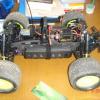LC Racing EMB-T Pro (1/14 Truggy)
-
Recently Browsing 0 members
- No registered users viewing this page.
-
Latest Posts
-
- 23,021 replies
- 969,719 views
-
- 9 replies
- 210 views
-
- 1 reply
- 6 views
-
RC Helicopter pilots. What was your line of progression via models and would you change the line up? 1 2 3
By karlo888, in Planes / Gliders / Helicopters
- 50 replies
- 985 views
-
- 5 replies
- 197 views
-




Recommended Posts
Join the conversation
You can post now and register later. If you have an account, sign in now to post with your account.